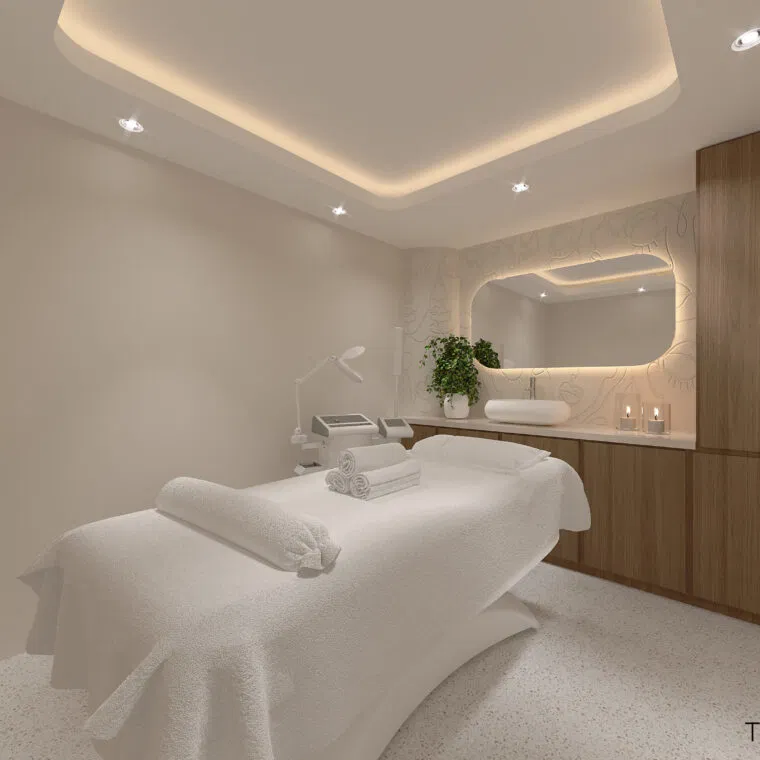
Color plays a pivotal role in shaping the experiences of patients and staff in medical settings. In the context of clinic interior design in Dubai, the strategic use of color goes beyond mere aesthetics—it taps into psychology and science to foster calm, trust, and efficiency. As clinics aim to elevate both patient experience and workplace productivity, understanding the emotional and cognitive impacts of color has never been more crucial.
Why Color Psychology Matters in Healthcare Environments
The study of color psychology looks at how various hues affect people’s emotions and behavior. In a clinic, these effects are especially pronounced due to the naturally high levels of stress, vulnerability, and anxiety associated with medical visits. When used correctly, color can reduce stress, enhance focus, support healing, and contribute to a more welcoming environment for all.
In Dubai, where healthcare is a rapidly growing industry with a global clientele, interior design must reflect not only modern sensibilities but also psychological harmony.
Understanding Color Associations in Clinic Settings
Each color triggers a unique set of emotional and physiological responses. Here’s how some of the most commonly used colors in clinics affect people:
Blue: Trust and Tranquility
Because blue is linked to calmness, cleanliness, and trust, it is commonly utilized in clinic interior design. It lowers heart rate and blood pressure, making it ideal for waiting areas and consultation rooms. Lighter shades can make small rooms appear more spacious, a practical benefit in Dubai’s high-rise clinic structures.
Green: Healing and Balance
Green represents nature and healing, often used to alleviate anxiety and induce a sense of renewal. It’s an excellent choice for recovery rooms or areas designed for emotional support, as it helps reduce eye strain and provides a restorative effect.
White: Cleanliness and Simplicity
White is the most traditional color used in medical settings. It symbolizes sterility and purity, helping patients associate the environment with cleanliness. However, excessive white can feel cold or impersonal, so it’s often balanced with softer accent colors or warm lighting.
Yellow: Energy and Optimism
Yellow evokes optimism and energy but should be used carefully. In moderation, it can uplift mood, especially in pediatric clinics. However, overstimulation from bright yellow tones may increase anxiety in already stressed patients.
Beige and Earth Tones: Warmth and Comfort
Neutral shades such as beige, taupe, and light browns create a grounded, comforting atmosphere. These colors are increasingly favored in Dubai clinics aiming for a more spa-like feel, which helps enhance patient relaxation.
Cultural Sensitivity and Local Aesthetics in Dubai
When choosing colors for clinic interior design in Dubai, cultural context cannot be ignored. The UAE is home to a diverse population, with both local Emirati traditions and international expectations shaping patient perception. For example:
-
Gold accents can convey luxury and care.
-
Cool, muted palettes are often associated with modernity and international standards.
-
Natural hues resonate with regional desert landscapes and promote connection to place.
Designers must strike a balance between cultural symbolism and universal psychological principles.
Color and Staff Productivity
The benefits of color psychology extend beyond patient comfort. Staff members also experience the effects of their environment:
-
Blue and green tones improve concentration and reduce mental fatigue.
-
Soft, warm colors in break rooms can create relaxing spaces that aid in recovery from emotional labor.
-
Bright, stimulating colors such as orange may be used sparingly in creative workspaces for administrative teams.
By optimizing staff areas with productivity in mind, clinics can support team morale and reduce burnout—a critical factor in high-pressure medical environments.
Lighting and Color Perception: A Critical Pairing
In Dubai’s sunlit climate, natural lighting plays a significant role in how colors appear. Designers must consider:
-
South-facing windows amplify warm tones.
-
LED lighting with a color rendering index (CRI) above 90 ensures true color appearance.
-
Reflective materials can brighten interiors, reducing the need for intense color saturation.
Pairing the right lighting with appropriate colors ensures the intended emotional response is consistently achieved.
The Science Behind Patient Responses
Numerous studies back the psychological influence of color in healthcare. Research has shown:
-
Patients exposed to cooler tones report lower levels of perceived pain and anxiety.
-
Color-coordinated signage improves wayfinding and reduces cognitive overload.
-
Recovery time is often shorter in rooms painted with calming hues.
Incorporating evidence-based design into clinic interiors makes a measurable difference in both patient outcomes and satisfaction.
Best Practices for Color Use in Dubai Clinic Interiors
To implement color psychology effectively in your clinic design project, consider the following principles:
-
Start with Functionality: Choose colors based on the room’s purpose.
-
Incorporate Accent Walls: Use strong colors in moderation to create focus without overwhelming.
-
Balance with Texture and Materials: Color should harmonize with wood, stone, metal, or fabric finishes.
-
Engage Multisensory Design: Complement colors with textures, scents, and sounds for a holistic experience.
-
Test in Natural Light: Always evaluate paint and material samples in actual lighting conditions.
Final Thoughts
In clinic interior design in Dubai, colors are more than just a design element—they are a psychological tool for healing, productivity, and human connection. When thoughtfully applied, color can transform a clinical setting into a compassionate space that serves both patients and practitioners. Understanding the science behind these choices ensures that design decisions are purposeful and impactful, laying the foundation for a better healthcare experience for all.